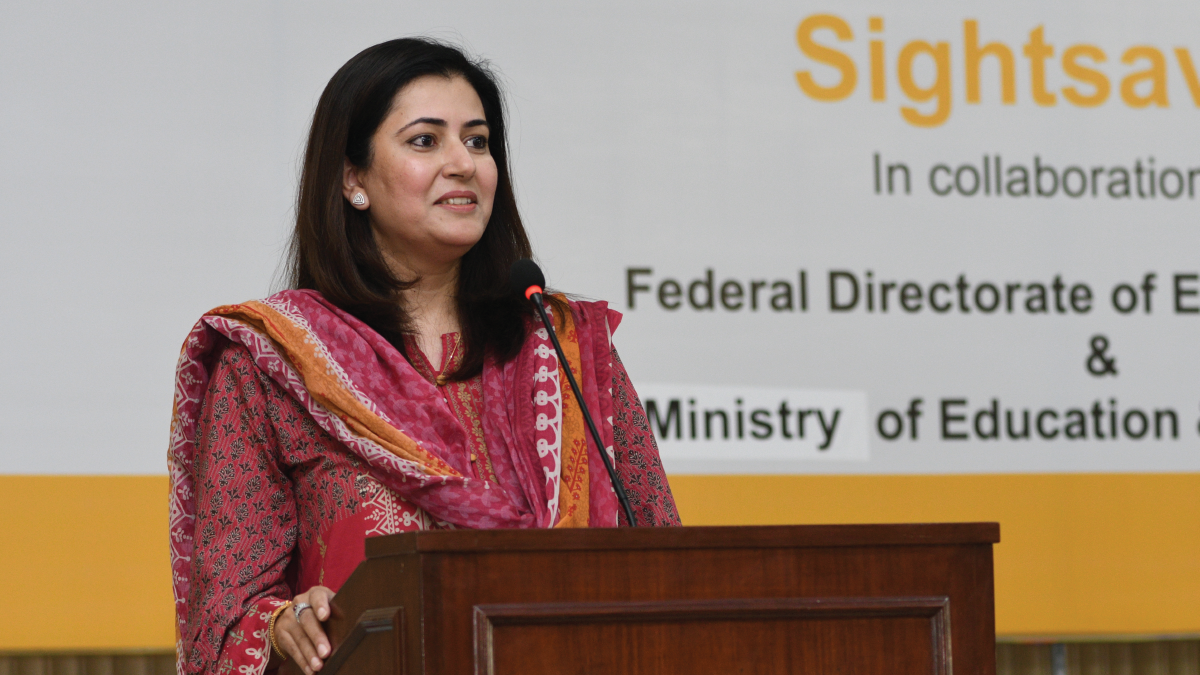Eliminating Trachoma
Munazza Gillani discusses how Pakistan has become the 19th country in the world to successfully eliminate trachoma as a major public health issue
In October 2024, the World Health Organization (WHO) announced that Pakistan had become the 19th country in the world to eliminate trachoma. Prime Minister Shehbaz Sharif observed that it “marks a pivotal moment in our journey towards a healthier Pakistan.”
A week later it was announced that India had become the 20th country to eliminate the disease, with Vietnam subsequently being confirmed as the 21st country less than two weeks after India. These announcements, made in quick succession, pointed to a growing momentum of initiatives aimed at eliminating this neglected tropical disease worldwide.
Nevertheless, trachoma still represents a major public health issue in around 40 countries – including Egypt, Afghanistan, and a number of Sub-Saharan African countries. And it is still considered the leading infectious cause of blindness worldwide, with estimations that it is responsible for visual impairments and blindness in around 1.9 million people.
So how did Pakistan manage to eradicate the disease? And how might the country maintain its non-trachoma status going forward? To learn more, The Ophthalmologist spoke with Munazza Gillani, Director for Pakistan and the Middle East at Sightsavers.
Can you tell me more about the SAFE strategy recommended by WHO?
The SAFE strategy is an acronym for the kinds of interventions which need to be employed when dealing with trachoma. S stands for surgery – required for individuals with advanced trachomatous trichiasis where intervention is necessary to prevent blindness. A stands for antibiotics – that is the mass distribution of antibiotics, particularly azithromycin, which is used to treat the infection and reduce the transmission of the disease. F stands for facial cleanliness – promoting facial hygiene and washing practices to reduce the spread of the disease. And E stands for environmental improvements – access to clean water and sanitation facilities to reduce the risk of infection.
All of these things require community mobilization, and increased public awareness and education in order to have a sustainable impact in terms of elimination of the disease. The SAFE strategy is a very comprehensive approach, addressing all of the different elements related to the spread and occurrence of trachoma.
What challenges did you face when deploying these strategies in Pakistan?
There were significant challenges, because prevention and elimination efforts require a lot of coordination and cooperation between the different stakeholders involved. This is not only health-focused intervention; it also requires collaboration with the WASH (water, sanitation and hygiene) sector, with community mobilizers and community-based organizations at the grassroots level. You also need to engage the local media and public sector.
One of the first major challenges was a lack of awareness and education about the disease. A lot of communities in Pakistan were unaware of trachoma, its causes, and its association with poor hygiene and health practices.
Second, as Pakistan is a developing country, there are lots of poverty pockets, and in those underdeveloped and marginalized districts and rural communities, there is a lack of access to clean water and sanitation, which is very important in preventing trachoma transmission.
Another issue was the healthcare infrastructure in Pakistan, particularly in rural areas. This is not just in terms of the physical infrastructure, but also in the shortage of trained health care professionals who could identify the disease, facilitate the diagnosis and treatment, and develop a referral chain. This is why we have invested heavily in this particular area, supporting the training of ophthalmologists in trichiasis surgery, which is a specialized skill for surgeons, and the training of lady health workers to identify people with symptoms of trachoma. Social barriers in Pakistan mean that some women cannot be visited by male health care workers, so these lady health workers are the backbone of Pakistan’s primary health care system. Both these cadres played a significant role in early identification, referral, and treatment of trachoma cases.
There were also coordination challenges at first. Many international and national NGOs, as well as both the public and private sector in Pakistan, were involved in the coordination effort. There had to be a well-structured platform, where all parties could interact and discuss the strategies, and plan accordingly to avoid duplication of efforts and resources. That platform – the Trachoma Task Force – was created with the support of the Ministry of Health and the National Program for Control of Blindness and Visual Impairment (NPCB&VI), and ensured that there was very close liaison between all stakeholders.
Going forward, how will Pakistan ensure the continued prevention of trachoma?
It’s very important that we integrate our efforts within the primary health care system, because if we don’t bring these services and educational interventions closer to the communities, we won’t be able to sustain them. Pakistan is a big country geographically, with a sporadic population in remote and rural areas, and so it’s crucial that our primary health care system can deliver and sustain these efforts.
Although the country faced a lot of serious challenges in its efforts to eliminate trachoma, a combination of efforts – from community engagement and public sector contribution to collaboration with international NGOs – helped us to progress towards this important public health goal. Continued commitment and adaptation will be essential to sustain and build on these achievements.
Do you have any recommendations for other countries aiming for non-trachoma status?
I would emphasize that it requires a coordinated and multifaceted approach to eliminate this particular disease. Sightsavers were the first organization in the country to work on developing this collaborative approach, by convincing the Ministry of Health and other stakeholders to join the Trachoma Task Force and work together on completely eradicating trachoma.
To eliminate a highly infectious disease, it’s essential to first build on the evidence, asking questions such as: What is the current prevalence of the disease? Is it an endemic problem? Is it a real public health issue? And to answer these types of questions, you need to have authentic and reliable data. Sightsavers also took the lead on this by doing the Global Trachoma Mapping survey in 29 trachoma-endemic countries, including Pakistan. And by creating this global trachoma mapping survey, we were able to produce a comprehensive data set on which we planned our strategies for the elimination, and it was done in a phased manner over a period of more than 15 years. Mapping of trachoma was replicated over the years in Pakistan by other partners through the Tropical Data initiative, which uses the same approach and technology as the Global Trachoma Mapping project. This helped ensure elimination efforts continued to head in the right direction.
The New Optometrist Newsletter
Permission Statement
By opting-in, you agree to receive email communications from The New Optometrist. You will stay up-to-date with optometry content, news, events and sponsors information.
You can view our privacy policy here
Most Popular
Sign up to The New Optometrist Updates
Permission Statement
By opting-in, you agree to receive email communications from The New Optometrist. You will stay up-to-date with optometry content, news, events and sponsors information.
You can view our privacy policy here
Sign up to The New Optometrist Updates
Permission Statement
By opting-in, you agree to receive email communications from The New Optometrist. You will stay up-to-date with optometry content, news, events and sponsors information.
You can view our privacy policy here







